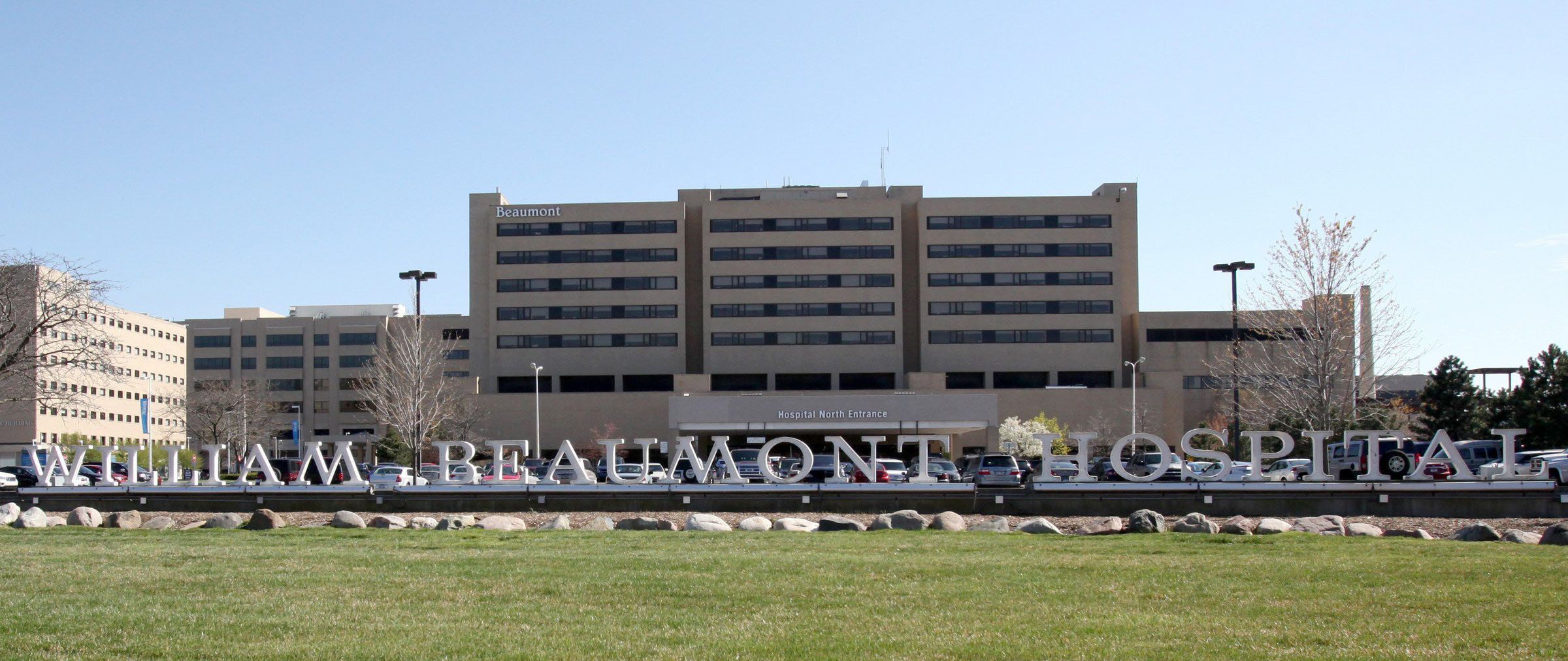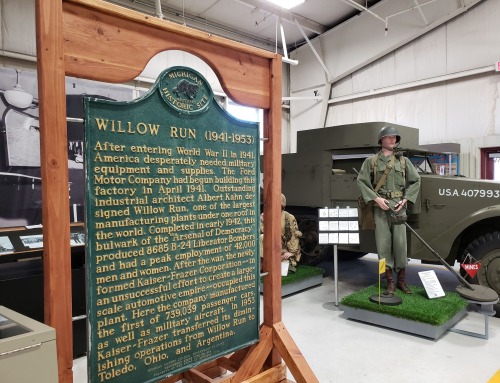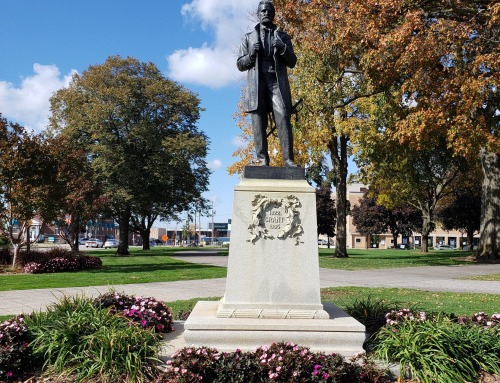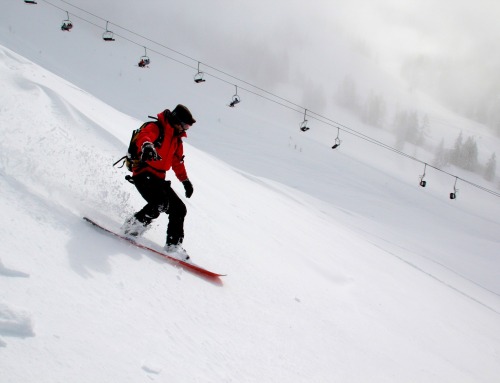Two men working together led to incredible scientific discovery in the early 1800s. One was highly educated, a former teacher, and a trained physician. While the other was an illiterate voyageur who worked a hard, physical job until an accident changed his life. This incident would lead to one of the most amazing studies of the human body.
The Shot Heard Around Mackinac Island
Alexis Bidagan dit St. Martin was an ordinary man. He likely never realized that he would go down in medical history. Born on April 8, 1802, in Canada, he, like many young men from New France, became a voyageur. On June 6, 1822, when he was twenty-years old, he found himself on Mackinac Island. He working as an indentured servant for the American Fur Company. One day while waiting in a line, he was accidentally shot at close range with a musket. The charge of the shot left a gaping hole in the upper left side of his abdomen.
Dr. William Beaumont Enters the Picture
The US Army surgeon stationed at nearby Fort Mackinac was summoned to treat the wound. The then 37-year old Dr. William Beaumont had been born in Lebanon, Connecticut. He attended and taught school in Champlain, New York. Then later he trained as a physician in St. Albans, Vermont. From 1812 to 1814, Beaumont was assigned duty as an assistant surgeon in the army during the War of 1812. Following the war, he started a private practice in Plattsburg, New York, but in 1820, he rejoined the army as a surgeon and was assigned to Fort Mackinac. He took a short leave in 1821 to marry Deborah Platt, whom he had met while in Plattsburg.
Once Beaumont reached the wounded voyageur, he cleaned the wound as best he could. The next day, although St Martin was still alive, his condition had worsened so Beaumont bled him, as was the standard practice. He did not expect the young man to live. At the time the vast majority of gut shot victims died. The shot had blown off fragments of his abdominal muscles, broke a few of his ribs and entered his stomach cavity.
Beaumont continued treating St. Martin and closely monitored his progress. Not much was known about digestion at the time and St. Martin’s unique wound provided an opportunity for research, as well as healgin. For seventeen days, any food St. Martin ate reemerged from the hole in the stomach. Finally, the food began to stay in the wounded man’s stomach, and his bowels returned to normal as well.
Experiments Begin
Months passed and the wound continued to heal itself with the help of multiple surgical procedures to remove clothing debris and other foreign material that persisted. Through all of this, the edge of the hole in St. Martin’s stomach attached itself to the edge of the hole in the skin creating a permanent hole or fistula in the stomach. Beaumont used this as an opportunity for a series of experiments initially with the patient’s best interest in mind.
Despite all of his healing after months of treatment, it was determined that Martin could no longer work at a physically laborious job. He would need community support. Since he was not a local, island leaders considered sending him back to Quebec. Dr. Beaumont had other ideas. He had St Martin sign a contract to allow Beaumont to perform experiments. St. Martin would also work as a servant to Beaumont, chopping wood, carrying burthens, and whatever else the doctor needed. He suffered little or no inconvenience from his wound, though some of the experiments caused discomfort.
The most common experiments for Dr. Beaumont consisted of the surgeon dangling food tied to a string into St. Martin’s stomach through the hole, then pulling it out and observing what had been digested. These experiments continued on and off for the next decade, with over 200 being performed during that time.
Beaumont Leaves Mackinac
In early 1825, Beaumont was transferred to Fort Niagara, and St. Martin came with him. Beaumont’s wife gave birth to their first child, Sarah. However, in September of that same year, St. Martin ran away to Canada. Beaumont still had him under a contract of indentured servitude, so had him brought back. From 1826 to 1827, Beaumont was stationed at Fort Howard in Green Bay. He was sent to the Jefferson Barracks in St. Louis in 1828, where he stayed for a while. St. Martin continued to be a handyman. Beaumont continued to experiment on him. He looked at how temperature, exercise and even emotions affect digestion.
The Two Men Part Ways
Beaumont and St. Martin eventually parted ways. In 1834, St. Martin wrote to Beaumont from Berthier, Canada, telling him that he would not be returning. Beaumont was still in St. Louis. In 1837, he became a Professor of Surgery in the medical department of St. Louis University. Two years later, he resigned from the army and Beaumont tried time and time again to get St. Martin to move to St. Louis, but the former voyageur refused.
St. Martin had married Marie Genevive Joly, who seems to not have approved of the experiments, nor of her husband being asked to follow Beaumont wherever he was stationed. Alexis and Marie had twelve children. Unfortunately, five of those children died before they reached adulthood.
Beaumont’s Legacy
After his experiments, Beaumont published what he learned. Experiments and Observations on the Gastric Juice and the Physiology of Digestion, which was published in 1838, drew 51 conclusions about the digestive system. These were revolutionary. Beaumont determined that vegetables were digested more slowly than meat. He learned that milk coagulated, or changed from a liquid to a gel, early in the process, and that digestion was aided by a churning motion within the stomach.
At the time, English chemist and physician William Prout had published theories about gastric juices, and the experiments of Beaumont and St. Martin were able to confirm many of them. Known to many now as the Father of Gastric Physiology, Beaumont slipped on an ice-covered step and died in 1853.
St. Martin’s Demise Decades Later
Alexis St. Martin died in 1880 in Quebec. His family, fearing grave robbers, delayed burying the body. They wanted the body to begin to decompose so that medical men would not be able to do an autopsy against their wishes. He was eventually buried at St. Thomas Parish Cemetery in Joliette, Quebec.
There have been many times throughout history where accidents have contributed to scientific advancements. The story of Dr. William Beaumont and Alexis St. Martin is just one of them. Despite thoughts regarding the relationship between doctor and patient being unethical, at the time this was not unusual. St. Martin agreed to sign a contract and was given room, board and paid a small stipend for being a handyman and allowing the experiments. Even today patients are paid or volunteer to take new medications or have new procedures done for the advancement of health care. Did Beaumont take advantage of a situation, probably. Did St. Martin benefit from the care he received that first year following the accident without making any payments, probably. Setting aside the ethical dilemma, it is certain that the medical field gained invaluable information regarding digestion. Both men will always be remembered for this advancement.







Leave A Comment
You must be logged in to post a comment.